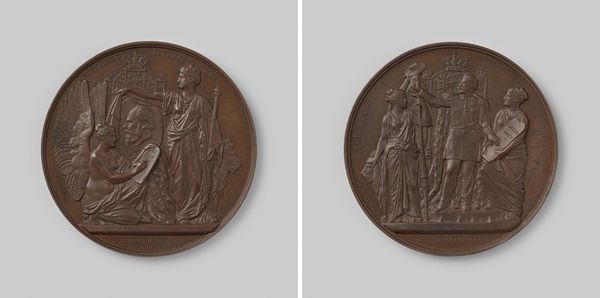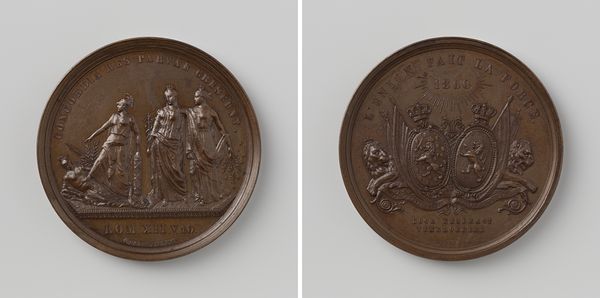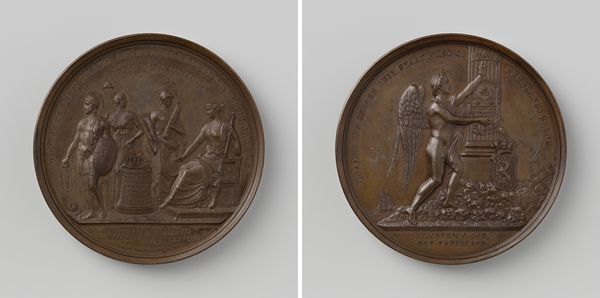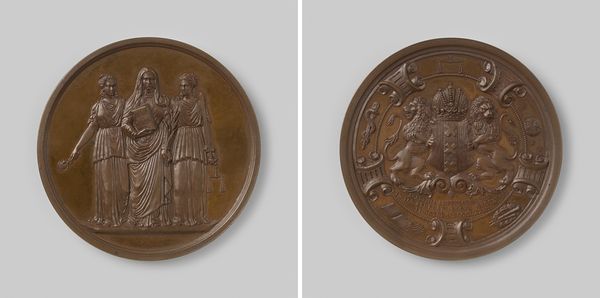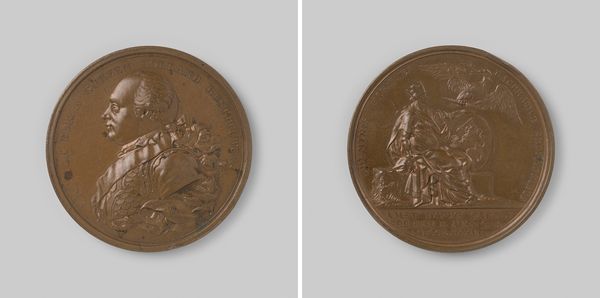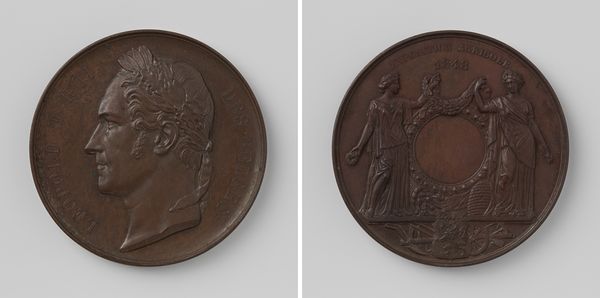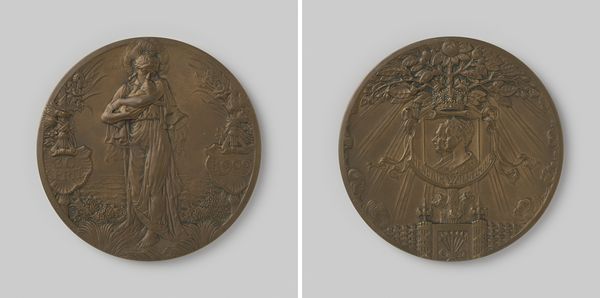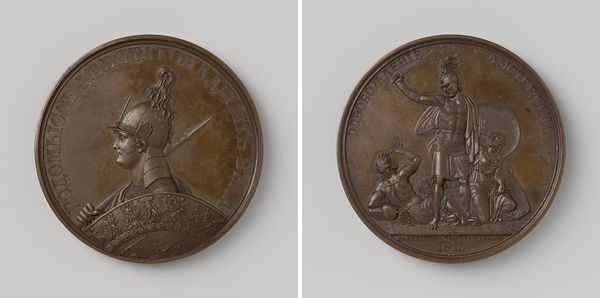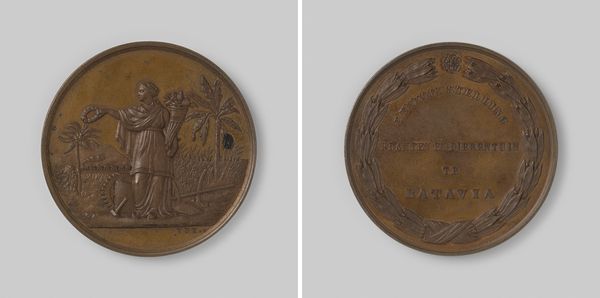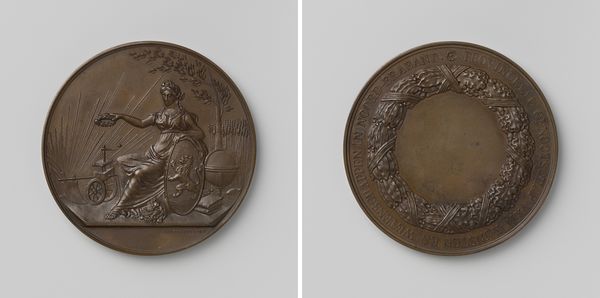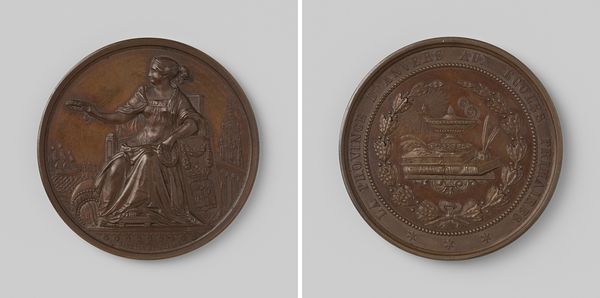
metal, relief, bronze, sculpture
#
portrait
#
neoclacissism
#
allegory
#
metal
#
sculpture
#
relief
#
bronze
#
sculpture
#
history-painting
Dimensions: diameter 7.4 cm, weight 165.23 gr
Copyright: Rijks Museum: Open Domain
Editor: This is Leopold Wiener's bronze relief, "Vijfentwintigjarige onafhankelijkheid van België 1855", made in 1855, commemorating 25 years of Belgian independence. It strikes me as a very deliberate attempt to create a grand, almost propagandistic, narrative of nationhood. What's your take? Curator: Absolutely. Wiener uses Neoclassical allegory, which was so often favored by those in power for conveying political ideologies through the symbolic image of the ideal state. It's interesting how Wiener links the very idea of Belgian independence with, in essence, nation-building through visual rhetoric and idealised historical representation. Notice the figure of Belgium herself – is she truly representative, or a romanticised projection of power? Editor: The figures on the right panel feel like standard Greco-Roman archetypes...Justice and Liberty? Curator: Indeed. Think about how these allegorical figures were conceived and consider, from a post-colonial perspective, the historical power dynamics involved. Whose "justice" and "liberty" are being represented here? Is it reflective of society, or a small percentage exerting a political will? Is this about celebrating freedom, or cementing a specific, potentially exclusionary, national identity? Editor: That’s a good point. It prompts a more critical viewing. I’d assumed a universal expression. Curator: And that's precisely what Wiener, like many artists of his era who adopted Neoclassicism, wants us to do. What appears celebratory is also doing the work of shaping public perception and reinforcing a national narrative, especially relevant when thinking about contemporary debates of representation in historical imagery. What’s been erased? What stories have been ignored or silenced for the sake of the narrative of this brave, independent country? Editor: That’s given me a lot to think about - to look beyond face value to consider the sociopolitical implications of these symbolic artworks. Thank you. Curator: It’s imperative we remember that art doesn’t exist in a vacuum, and that its meanings are often complex and contested, tied closely to systems of power and historical moments. Thanks for asking such critical questions.
Comments
No comments
Be the first to comment and join the conversation on the ultimate creative platform.
